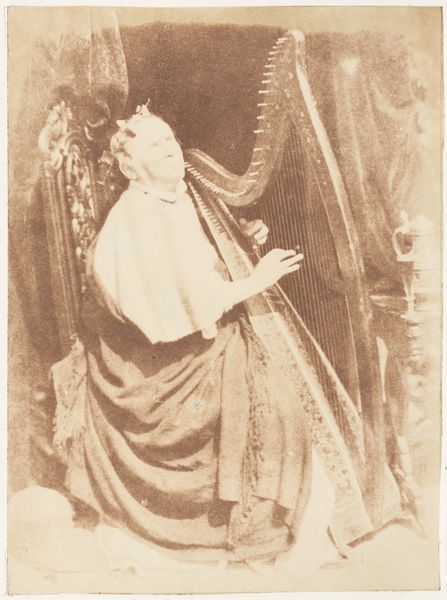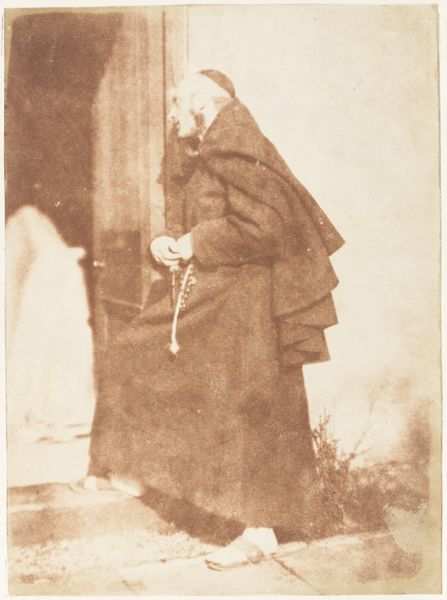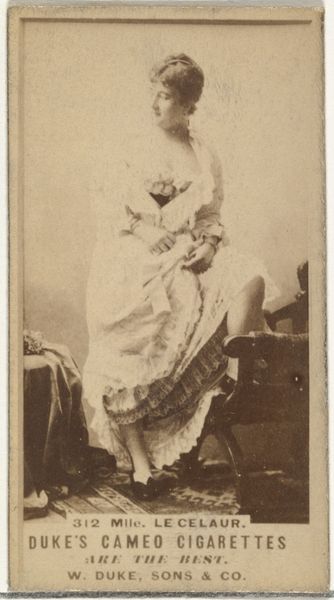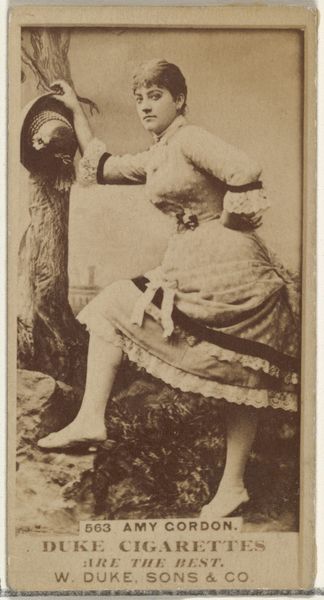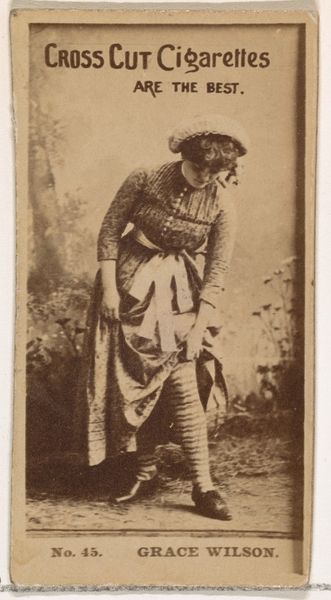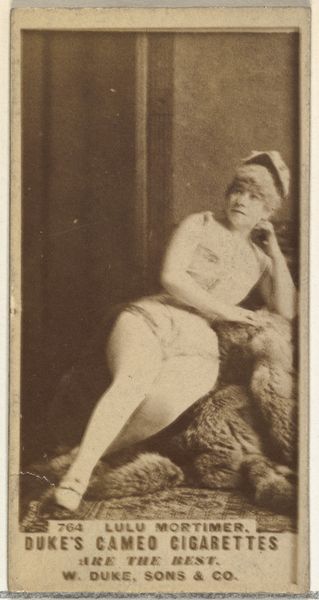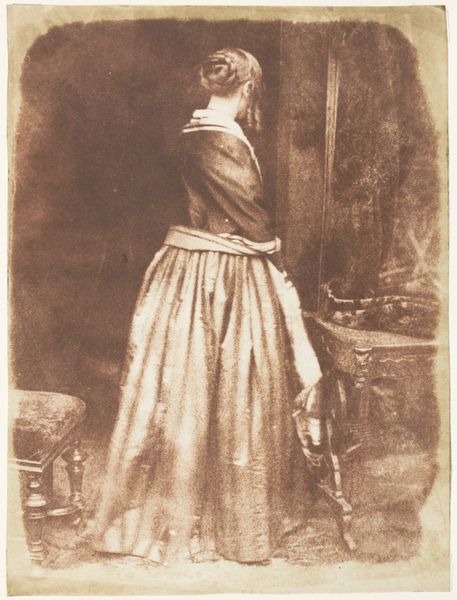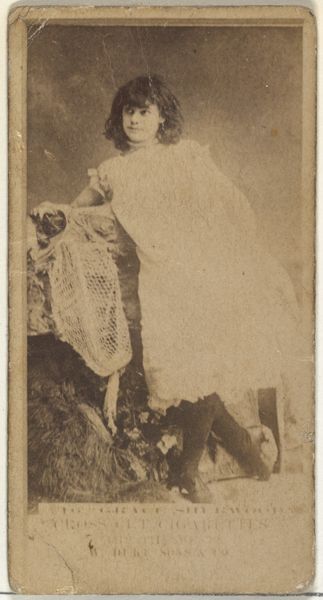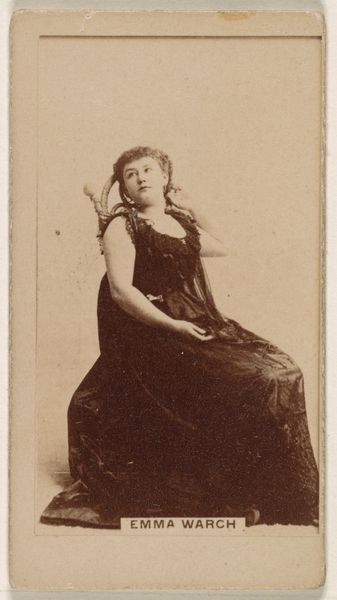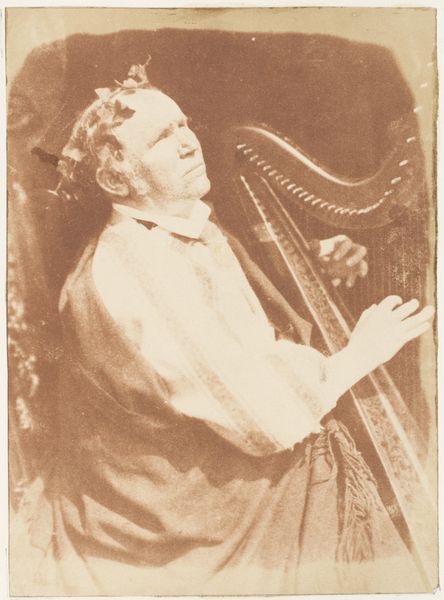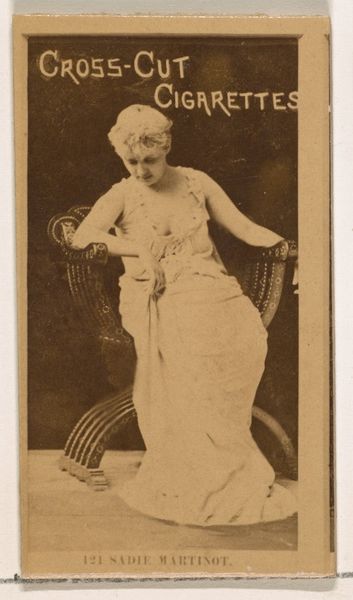
photography, albumen-print
#
portrait
#
photography
#
historical photography
#
romanticism
#
19th century
#
men
#
history-painting
#
albumen-print
Copyright: Public Domain
Editor: This is "Patrick Byrne," a photograph taken between 1843 and 1847 by Hill and Adamson, printed using the albumen process. The lighting creates this beautiful, ethereal feel, but something about the pose feels... staged? How do you interpret this work, particularly considering the time it was made? Curator: You're right to notice that staged quality. Think about the power dynamics at play. Here, we see Patrick Byrne, an Irish harpist. Consider Ireland in the mid-19th century – a colony grappling with British rule, famine, and cultural suppression. How does seeing Byrne positioned with a harp, an instrument deeply tied to Irish cultural identity, change your understanding? Editor: I see it differently now. It’s almost an assertion of cultural identity, a resistance to cultural erasure. Was Hill and Adamson's intent to document or romanticize? Curator: It’s both, and neither purely. Their work reflects the complex relationship between colonizer and colonized, observer and observed. They aimed to document, yes, but through a romantic lens popular at the time, which, as we know, carries its own set of biases and power dynamics. The choice of an "artistic" medium like albumen print, even in its photographic form, elevates Byrne, yet simultaneously might exoticize him for a British audience. Editor: So the medium and the subject together create a dialogue about representation and identity? Curator: Precisely! This image isn't just a portrait. It’s a loaded statement about cultural preservation, national identity, and the very act of seeing. Thinking about whose story gets told and how, becomes essential. Editor: This gives me so much to consider. I came in thinking about aesthetics, but I’m leaving with questions about power, representation, and the photographer's role in all of this. Curator: And that's precisely the kind of critical engagement that allows us to see beyond the surface and grapple with the deeper meanings embedded within art. It shows the layers of political significance behind a seemingly simple portrait.
Comments
No comments
Be the first to comment and join the conversation on the ultimate creative platform.
